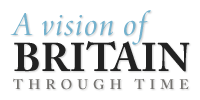In 1887, John Bartholomew's Gazetteer of the British Isles described Lancashire like this:
Lancashire, or Lancaster, co. palatine and maritime shire, in NW. of England. bounded N. by Westmorland and Cumberland, E. by Yorkshire, S. by Cheshire, and W. by the Irish Sea; greatestlength, 76 miles; greatest breadth, 45 miles; area, 1,208,154 ac.; pop. 3,454,441. A detached part of the co., known as Furness (25 miles long, 23 miles broad), is separated from the main portion by Morecambe Bay and a part of Westmorland co. ...
The coast line of Lancashire is very irregular, the chief inlets being Morecambe Bay, Lancaster Bay, and the estuaries of the Mersey and the Ribble. Towards the shore, which comprises great stretches of sand, the land has generally a flat appearance. In the N. and E. it becomes more elevated, but the chief heights are in Furness, where an alt. of 2633 ft. is reached at Coniston Old Man. The principal rivers are the Mersey, Ribble, Lune, Wyre, Winster, and Leven. Peat prevails in the soil of the upland districts, while much of the low lying land consists of a rich loam. The chief crops are oats, wheat, and potatoes. (For agricultural statistics, see Appendix.) Carboniferous limestone abounds in the N. part of the co.; on the coast is the old red sandstone. The great coalfield of Lancashire, the existence of which has greatly contributed towards establishing its pre-eminence as a manufacturing co., covers an area of about 217 sq. miles between the Ribble and the Mersey. Iron is abundant in Furness. Lancashire is intersected by an intricate network of canals and railways. Its immense cotton mfrs. have a world-wide fame, while other textile fabrics are largely produced. Its mfrs. of machinery of all descriptions are also extensive. Lancashire comprises 6 hundreds, 453 pars., the parl. And mun. bors. of Barrow in Furness (1 member), Blackburn, Bolton (2 members each), Burnley, Bury (1 member each), Liverpool (9 members), Manchester (6 members), Salford (3 members), Oldham, Preston (2 members each), Rochdale, St Helens, Wigan (1 member each), the greater part of the parl. and mun. bors. of Ashton under Lyne and Warrington (1 member each), and the mun. bors. of Accrington, Bacup, Blackpool, Bootle cum Linacre, Clitheroe, Heywood, Lancaster, Over Darwen, and Southport. It is comprised in the dioceses of Liverpool, Manchester, Carlisle, and Ripon. For parl. purposes the co. is divided into 23 divisions, each division returning 1 member--North Lancashire, 4 divisions, viz., North Lonsdale, Lancaster, Blackpool, and Chorley; North-East Lancashire, 4 divisions, viz., Darwen, Clitheroe, Accrington, and Rossendale; South-East Lancashire, 8 divisions, viz., West Houghton, Heywood, Middleton, Radcliffe cum Farnmorth, Eccles, Stretford, Gorton, and Prestwich; South-West Lancashire, 7 divisions, viz., Southport, Ormskirk, Bootle, Widnes, Newton, Hindley, and Leigh. The representation of Lancashire was increased from 8 to 23 members in 1885.
Lancashire through time
Lancashire is now part of Lancashire county. Click here for graphs and data of how Lancashire has changed over two centuries. For statistics about Lancashire itself, go to Units and Statistics.
Lancashire -- but you should check this covers the area you are interested in.GB Historical GIS / University of Portsmouth, History of Lancashire | Map and description for the county, A Vision of Britain through Time.
URL: https://www.visionofbritain.org.uk/place/17463
Date accessed: 31st October 2024
Not where you were looking for?
Click here for more detailed advice on finding places within A Vision of Britain through Time, and maybe some references to other places called "Lancashire".
